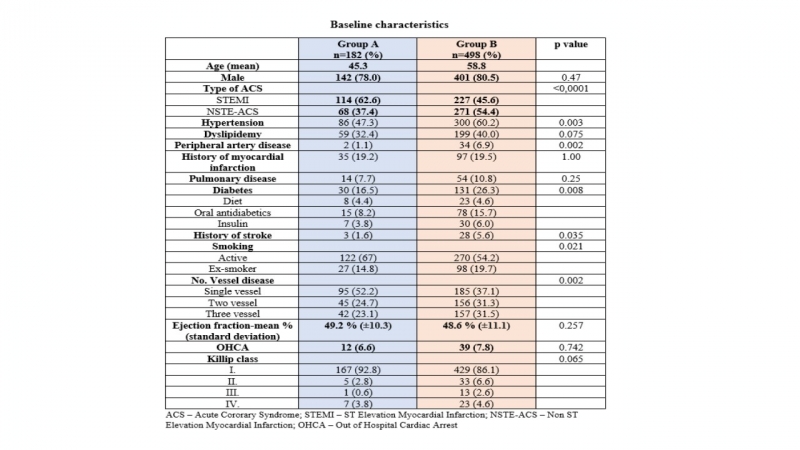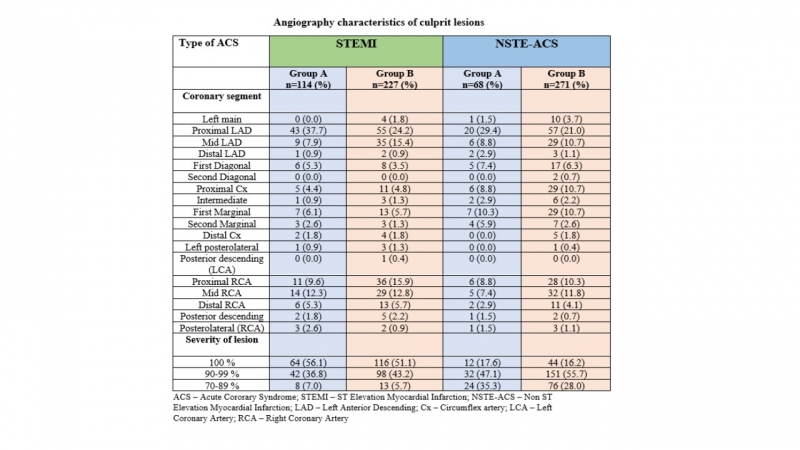PRE-HOSPITAL DELAY, CLINICAL CHARACTERISTICS, ANGIOGRAPHIC FINDINGS, AND IN-HOSPITAL MORTALITY IN YOUNG AND MIDDLE-AGED ADULTS WITH ACUTE CORONARY SYNDROME: A SINGLE-CENTER REGISTRY ANALYSIS
There are several differences between younger and older adults with acute coronary syndrome (ACS). We analyzed the prehospital time interval (symptom onset to first medical contact [FMC]), clinical characteristics, angiographic findings, and in-hospital mortality in patients aged ≤ 50 (group A) and 51–65 (group B) years hospitalized for ACS. We retrospectively collected data from 2,010 consecutive patients hospitalized with ACS between October 1, 2018 and October 31, 2021 from a single-center ACS registry. Groups A and B included 182 and 498 patients, respectively. ST-segment elevation myocardial infarction (STEMI) was more common in group A than group B (62.6% and 45.6%, respectively; p < 0.001). The median time from symptom onset to FMC in STEMI did not significantly differ between groups A and B (74 [40–198] and 96 [40–249] min, respectively; p=0.369). There was no difference in the rate of subacute STEMI (symptom onset to FMC > 24 h) between groups A and B (10.4% and 9.0%, respectively; p=0.579). Among patients with non-ST elevation acute coronary syndrome (NSTE-ACS), 41.8% and 50.2% of those in groups A and B, respectively, presented to the hospital within 24 h of symptom onset (p=0.219). Proximal LAD was more commonly the culprit lesion in group A (vs. group B), irrespective of the ACS type (STEMI, 37.7% and 24.2%; p=0.009; NSTE-ACS, 29.4% and 21%; p=0.140). The hospital mortality rate for STEMI patients was 1.8% and 4.4% in groups A and B (p=0.210), while for NSTE-ACS it was 2.9% and 2.6% in groups A and B (p=0.873). No significant differences in prehospital delay were found between young (≤ 50 years) and middle-aged (51–65 years) patients with ACS. Although clinical characteristics and angiographic findings differ between young and middle-aged patients with ACS, the in-hospital mortality rate did not differ between the groups.




